Review of Natural Hazard Risks for Wind Farms
Abstract
1. Introduction
2. Materials and Methods
3. Results
3.1. Risks from Earthquakes for Onshore Wind Turbines
3.2. Risk from Strong Wind for Onshore Wind Turbines
- = median demand;
- = median capacity;
- = specific demand;
- = specific demand;
- = regression parameters;
- = spectral acceleration;
- = mean wind velocity;
- = parameter to measure dispersion for demand;
- = parameter to measure dispersion for capacity;
- = specific demand;
- = natural logarithm;
- = standard normal probability integral.
3.3. Risk from Hurricanes for Offshore Wind Farms (OWFs)
- = failure probability at wind speed w;
- = sustained wind speed at hub height (knots);
- = scale parameter of the log-logistic function;
- = shape parameter of the log-logistic function;
- = scale parameter of the GEV distribution for wind speed;
- = shape parameter of the GEV distribution for wind speed;
- = location parameter of the GEV distribution for wind speed.
3.4. Risks from Tsunamis for Offshore Wind Farms
3.5. Risk from Lightning
4. Conclusions
- For seismic and high-velocity events affecting inland wind turbines, researchers point out that foundation failures are critical. The main areas of study include the effects of higher modes of vibration on design and response, the influences of near-fault and far-fault seismic loads, and the influences of the directionality and characteristics of seismic and wind loads. Integration of data-based and physics-based models is gaining popularity in many fields. More research is needed to utilize monitored data to quantify the seismic risk for wind turbines. While design methodologies have improved over time, accidents and construction errors can trigger failures. Further research should focus on reducing construction errors and improving inspection methodologies.
- Hurricane risk modeling for OWTs relies heavily on hurricane track simulation. This can be computationally challenging, and alternate, simpler methods may be helpful to reduce computation costs. Moreover, frameworks that can accommodate changing risk scenarios in response to climate change (following guidelines from government agencies or agencies such as the Intergovernmental Panel on Climate Change (IPCC)), the latest construction materials, and monitored data from wind turbine farms would be useful for more efficient risk analysis.
- Experimental and analytical methods for studying tsunami risk exist, and there are more research contributions based on experimental methods using scaled-down models. The effects of wave loads, soil–structure interactions, scouring of foundations, and permanent settlement on the design and performance evaluation of wind turbine structures are critical in tsunami risk. There is limited research on tsunami risk for floating foundations. Future research should focus on risk and design criteria for floating foundations in relation to tsunami waves. Moreover, researchers point out the need to include higher modes of vibration in analyses in future research. The transient nature of foundation scour is also potential future research topic.
- Tall wind turbines are sensitive to lightning strikes, which occur with seasonal and geographical variations. Detecting lightning damage is critical, as it can propagate further damage and result in expensive repairs and downtime. While mathematical and experimental methods exist, researchers highlight the need for more research on self-triggered lightning, which results in enhanced risk even under low thundercloud fields. Moreover, further research is needed to explore the extent of structural damage in the towers of WTs from lightning.
Author Contributions
Funding
Data Availability Statement
Acknowledgments
Conflicts of Interest
References
- GWEC. Global Wind Report 2019; Global Wind Energy Council: Brussels, Belgium, 2019. [Google Scholar]
- Share of Electricity Production from Wind, (n.d.) Our World in Data. Available online: https://ourworldindata.org/grapher/share-electricity-wind (accessed on 1 December 2022).
- Wikipedia. Wind Power in the United States. Available online: https://en.wikipedia.org/wiki/Wind_power_in_the_United_States (accessed on 19 December 2022).
- World Forum Offshore Wind (WFO). Global Offshore Wind Report; World Forum Offshore Wind (WFO): Hamburg, Germany, 2022. [Google Scholar]
- Global Wind Energy Council. Offshore Market Outlook to 2030; Global Wind Energy Council: Brussels, Belgium, 2020. [Google Scholar]
- World Forum Offshore Wind. Offshore Wind Worldwide ‘Regulatory Framework in Selected Countries’. Available online: https://www.hoganlovells.com/en/publications/offshore-wind-worldwide_regulatory-framework-in-selected-countries (accessed on 22 November 2022).
- Global Wind Atlas. (n.d.). Globalwindatlas.Info. Available online: https://globalwindatlas.info/en (accessed on 2 December 2022).
- Schmidt, J.; Gruber, K.; Klingler, M.; Klöckl, C.; Camargo, L.R.; Regner, P.; Turkovska, O.; Wehrle, S.; Wetterlund, E. A new perspective on global renewable energy systems: Why trade in energy carriers matters. Energy Environ. Sci. 2019, 12, 2022–2029. [Google Scholar] [CrossRef]
- DNV. Available online: https://www.dnv.com/article/how-do-recent-earthquakes-events-impact-wind-turbines--179350 (accessed on 1 December 2022).
- Ma, Y.; Martinez-Vazquez, P.; Baniotopoulos, C. Wind turbine tower collapse cases: A historical overview. Proc. Inst. Civil Eng. Struct. Build. 2019, 172, 547–555. [Google Scholar] [CrossRef]
- Ishihara, T.; Yamaguchi, A.; Takahara, K.; Mekaru, T.; Matsuura, S. An analysis of damaged wind turbines by typhoon Maemi in 2003. In Proceedings of the Sixth Asia-Pacific Conference on Wind Engineering, Seoul, Korea, 12–14 September 2005; pp. 1413–1428. [Google Scholar]
- Chou, J.-S.; Tu, W.-T. Failure analysis and risk management of a collapsed large wind turbine tower. Eng. Fail. Anal. 2011, 18, 295–313. [Google Scholar] [CrossRef]
- Chen, X.; Xu, J.Z. Structural failure analysis of wind turbines impacted by super typhoon Usagi. Eng. Fail. Anal. 2016, 60, 391–404. [Google Scholar] [CrossRef]
- Science Codex Report. Available online: https://www.sciencecodex.com/nasa_sees_usagi_become_a_typhoon-119661 (accessed on 22 November 2022).
- Li, Z.-Q.; Chen, S.-J.; Ma, H.; Feng, T. Design defect of wind turbine operating in typhoon activity zone. Eng. Fail. Anal. 2013, 27, 165–172. [Google Scholar] [CrossRef]
- Wolfgang, G.; Racansky, V.; Maurer, C.; Freitag, P. Ground Improvement for Wind Turbine Foundations in Europe. Messe Wien (Vienna Austria); European Wind Energy Association (EWEA): Brussels, Belgium, 2013. [Google Scholar]
- Riso DTU. Final Report on Investigation of a Catastrophic Turbine Failures; Technical University of Denmark: Copenhagen, Denmark, 2008. [Google Scholar]
- Porter, L. Strong Wind Destroys Searsburg Wind Turbine, Rutland Herald. Available online: https://www.timesargus.com/news/blade-flies-off-destroying-wind-tower-at-searsburg/article_fc312d10-a65d-51cd-8456-6a50d3eb4dea.html (accessed on 15 October 2022).
- Watts, A. Wind Power Gets Bent out of Shape in Wyoming. Available online: https://wattsupwiththat.com/2011/02/02/wind-power-gets-bent-out-of-shape-in-wyoming/ (accessed on 10 March 2022).
- Potrikus, A. New, Higher Wind Turbine Going up in Place of One That Toppled in the Town of Fenner. Available online: https://www.syracuse.com/news/2012/10/new_higher_wind_turbine_going.html (accessed on 27 December 2022).
- Polacek, K. Wind Turbine Topples in Mill Run, Startles Residents. Available online: https://www.wind-watch.org/news/2014/01/16/wind-turbine-topples-in-mill-run-startles-residents/ (accessed on 27 December 2022).
- Backstrand, J.; Hurtig. Final Report RO 2017:01; Statens Haverikommission: Stockholm, Sweden, 2017.
- PEI. Collapse of Wind Turbine under Investigation; Power Engineering International: Saxony, Germany, 2017. [Google Scholar]
- Elsisi, M.; Tran, M.-Q.; Mahmoud, K.; Lehtonen, M.; Darwish, M.M.F. Robust design of ANFIS-based blade pitch controller for wind energy conversion systems against wind speed fluctuations. IEEE Access 2021, 9, 37894–37904. [Google Scholar] [CrossRef]
- CWIF. Wind Accidents—Caithness Windfarm Information Forum. 2017. Available online: https://slidelegend.com/wind-accidents-caithness-windfarm-information-forum_59e4cd921723dd1b30b8ce69.html (accessed on 9 October 2022).
- Seong, J.; Haigh, S.; Madabhushi, S.; Shrivastava, R.; Veluvolu, R.; Padhy, P. On seismic protection of wind turbine foundations founded on liquefiable soils. Soil Dyn. Earthq. Eng. 2022, 159, 107327. [Google Scholar] [CrossRef]
- Ishihara, T.; Phuc, P.V.; Fujino, Y.; Takahara, K.; Mekaru, T. A filed Test and full dynamic simulation on a stall regulated wind turbine. In Proceedings of the Sixth Asia-Pacific Conference on Wind Engineering (APCWE-VI), Seoul, Korea, 12–14 September 2005. [Google Scholar]
- Wind Action Report. Available online: https://www.windaction.org/posts/43219-typhoon-maemi-downs-wind-turbines-japan (accessed on 16 December 2022).
- The Telegraph. Available online: https://www.telegraph.co.uk/news/2022/02/15/pictured-storms-send-300ft-welsh-wind-turbine-crashing-ground/ (accessed on 19 December 2022).
- Windustry. How Much do Wind Turbines Cost? Available online: https://www.windustry.org/how_much_do_wind_turbines_cost (accessed on 20 December 2022).
- Blewett, D. Weather Guard Lightning Tech. Wind Turbine Cost: Worth the Million-Dollar Price in 2022? Available online: https://weatherguardwind.com/how-much-does-wind-turbine-cost-worth-it/ (accessed on 22 December 2022).
- Prowell, I.; Veers, P. Assessment of Wind Turbine Seismic Risk: Existing Literature and Simple Study of Tower Moment Demand; SANDIA REPORT; Sandia National Laboratories (SNL): Albuquerque, NM, USA; Livermore, CA, USA, 2009.
- Ntambakwa, E.; Rogers, M. Seismic Forces for Wind Turbine Foundations Wind Turbine Structures, Dynamics, Loads and Control; Garrad Hassan America, Inc.: San Diego, CA, USA, 2009. [Google Scholar]
- Agbayani, N.A. Design challenges in international wind power projects: From foreign codes to computer coding in a small office setting. In Proceedings of the 71st Annual Structural Engineers Association of California (SEAOC) Convention, Santa Barbara, CA, USA; 2002; pp. 117–132. [Google Scholar]
- ICBO. Uniform Building Code; International Conference of Building Officials: Washington, DC, USA, 1997; Volume 2. [Google Scholar]
- GL, Rules and Guidelines, Industrial Services. Guidelines for Certification of Offshore Wind Turbines; Germanischer Lloyd: Hamburg, Germany, 2005. [Google Scholar]
- IEC. Wind Turbines—Part 1: Design Requirements; International Electrotechnical Commission: Geneva, Switzerland, 2005. [Google Scholar]
- DNV Risø National Laboratory. Guidelines for Design of Wind Turbines, 2nd ed.; Wind Energy Department, Risø National Laboratory: Risø, Denmark, 2002. [Google Scholar]
- Anderson, C.; Bertero, V. Uncertainties in establishing design earthquakes. J. Struct. Eng. 1987, 113, 1709–1724. [Google Scholar] [CrossRef]
- Bertero, V.V.; Mahin, S.A.; Herrera, R.A. Aseismic design implications of near-fault San Fernando earthquake records. Earthq. Eng. Struct. Dyn. 1978, 6, 31–42. [Google Scholar] [CrossRef]
- Hall, J.F.; Heaton, T.H.; Halling, M.W.; Wald, D. Near-source ground motion and its effects on flexible buildings. Earthq. Spectra 1995, 11, 569–605. [Google Scholar] [CrossRef]
- Attalla, M.; Paret, T.; Freeman, S. Near source behavior of buildings under pulse type earthquakes. In Proceedings of the 6th U.S. National Conference on Earthquake Engineering, Seattle, WA, USA, 31 May–4 June 1998. [Google Scholar]
- Iwan, W.D. Drift spectrum: Measure of demand for earthquake ground motions. Eng. Struct. 1997, 123, 397–404. [Google Scholar] [CrossRef]
- Chopra, A.K.; Chintanapakdee, C. Comparing response of SDF systems to near-fault and far-fault earthquake motions in the context of spectral regions. Earthq. Eng. Struct. Dyn. 2001, 30, 1769–1789. [Google Scholar] [CrossRef]
- Hatzigeorgiou, G.D. Ductility demand spectra for multiple near- and far-fault earthquakes. Soil Dyn. Earthq. Eng. 2010, 30, 170–183. [Google Scholar] [CrossRef]
- Kalkan, E.; Kunnath, S.K. Effects of Fling Step and Forward Directivity on Seismic Response of Buildings. Earthq. Spectra 2006, 22, 367–390. [Google Scholar] [CrossRef]
- Alavi, B.; Krawinkler, H. Behavior of moment-resisting frame structures subjected to near-fault ground motions. Earthq. Eng. Struct. Dyn. 2004, 33, 687–706. [Google Scholar] [CrossRef]
- Baker, J. Quantitative classification of near-fault ground motions using wavelet analysis. Bull. Seism. Soc. Am. 2007, 97, 1486–1501. [Google Scholar] [CrossRef]
- Bray, J.; Rodriguez-Mark, A. Characterization of forward-directivity ground motions in the near-fault region. Soil Dyn. Earthq. Eng. 2004, 24, 815–828. [Google Scholar] [CrossRef]
- Somerville, P.G. Magnitude scaling of the near fault rupture directivity pulse. Phys. Earth Planet. Inter. 2003, 137, 201–212. [Google Scholar] [CrossRef]
- Hwang, H.H.; Huo, J.-R. Generation of hazard-consistent fragility curves. Soil Dyn. Earthq. Eng. 1994, 13, 345–354. [Google Scholar] [CrossRef]
- Baker, J. Efficient Analytical Fragility Function Fitting Using Dynamic Structural Analysis. Earthq. Spectra 2005, 31, 579–599. [Google Scholar] [CrossRef]
- Hwang, H.H.M.; Jaw, J. Probabilistic damage analysis of structures. Eng. Struct. 1990, 116, 1992–2007. [Google Scholar] [CrossRef]
- Eads, L.; Miranda, E.; Krawinkler, H.; Lignos, D. An efficient method for estimating the collapse risk of structures in seismic regions. Earthq. Eng. Struct. Dyn. 2013, 42, 25–41. [Google Scholar] [CrossRef]
- Lignos, D.G.; Kolios, D.; Miranda, E. Fragility assessment of reduced beam section moment connections. Eng. Struct. 2010, 136, 1140–1150. [Google Scholar] [CrossRef]
- Ramirez, C.M.; Lignos, D.; Miranda, E.; Kolios, D. Fragility functions for pre-Northridge welded steel moment-resisting beam-to-column connections. Eng. Struct. 2012, 45, 574–584. [Google Scholar] [CrossRef]
- Ellingwood, B.R.; Celik, O.C.; Kinali, K. Fragility assessment of building structural systems in Mid-America. Earthq. Eng. Struct. Dyn. 2007, 36, 1935–1952. [Google Scholar] [CrossRef]
- Nielson, B.G.; DesRoches, R. Seismic fragility methodology for highway bridges using a component level approach. Earthq. Eng. Struct. Dyn. 2007, 36, 823–839. [Google Scholar] [CrossRef]
- Sousa, L.; Silva, A.; Marques, M.; Crowley, H.; Pinho, R. Including multiple IMTs in the fragility functions for earthquake loss estimation. In Proceedings of the 2nd International Conference on Vulnerability and Risk Analysis and Management, Liverpool, UK, 13–16 July 2014; pp. 1716–1725. [Google Scholar]
- Kafali, C.; Grigoriu, M. Seismic fragility analysis. In Proceedings of the 9th ASCE Specialty Conference on Mechanics and Structural Reliability (PMC), Albuquerque, NM, USA, 26–28 July 2004. [Google Scholar]
- Nuta, E.; Christopoulos, C.; Packer, J.A.P.A. Methodology for seismic risk assessment for tubular steel wind turbine towers: Application to Canadian seismic environment. Can. J. Civ. Eng. 2011, 38, 293–304. [Google Scholar] [CrossRef]
- Prowell, I.; Veletzos, M.; Elgamal, A.; Restrepo, J. Experimental and numerical seismic response of a 65 kW wind turbine. J. Earthq. Eng. 2009, 13, 1172–1190. [Google Scholar] [CrossRef]
- Bazeos, N.; Hatzigeorgiou, G.; Hondros, I.; Karamaneas, H.; Karabalis, D.; Beskos, D. Static, seismic and stability analyses of a prototype wind turbine steel tower. Eng. Struct. 2002, 24, 1015–1025. [Google Scholar] [CrossRef]
- Patil, A. Response of a Wind Turbine Structure to Strong Ground Motions and High Velocity Winds. Ph.D. Dissertation, Florida State University, Tallahassee, FL, USA, 2015. [Google Scholar]
- Prowell, I.; Elgamal, A.; Uang, C.; Jonkman, J. Estimation of Seismic Load Demand for a Wind Turbine in the Time Domain; Conference Paper NREL CP-500-47536; National Renewable Energy Laboratory: Golden, CO, USA, 2010.
- Lavassas, I.; Nikolaidis, G.; Zervas, P.; Baniotopoulos, C. Design of Large Scale Wind Turbine Towers In Seismic Areas; Aristotle University of Thessaloniki: Volos, Greece, 2012. [Google Scholar]
- Ishihara, T.; Sarwar, M.W. Numerical and theoretical study on response of wind turbines. In Proceedings of the European Wind Energy Conference and Exhibition, Tokyo, Japan, 31 March–3 April 2008; pp. 1–5. [Google Scholar]
- Hanler, M.; Ritchel, U.; Warnke, I. Systematic modelling of wind turbine dynamics and earthquake loads on wind turbines. In Proceedings of the European Wind Energy Conference and Exhibition, European Wind Energy Association, Athens, Greece, 27 February–2 March 2006; pp. 1–6. [Google Scholar]
- Prowell, I.; Veletzos, M.; Elgamal, A.; Restrepo, J. Shake table test of A 65 kW wind turbine and computational simulation. In Proceedings of the 14th World Conference on Earthquake Engineering, Beijing, China, 12–17 October 2008. [Google Scholar]
- Zhao, X.; Maisser, P. Seismic response analysis of wind turbine towers including soil- structure interaction. Proc. Inst. Mech. Eng. 2006, 220, 53. [Google Scholar] [CrossRef]
- Quilligan, A.; O’Connor, A.; Pakrashi, V. Fragility analysis of steel and concrete wind turbine towers. Eng. Struct. 2012, 36, 270–282. [Google Scholar] [CrossRef]
- Kawai, H.; Michishita, K.; Deguchi, A. Design wind loads on a wind turbine for strong wind. In Proceedings of the BBAA VI International Colloquium on Bluff Bodies Aerodynamics & Applications, Milano, Italy, 20–24 July 2008. [Google Scholar]
- Lee, K.-S.; Bang, H.-J. A study on the prediction of lateral buckling load for wind turbine tower structures. Int. J. Precis. Eng. Manuf. 2012, 13, 1829–1836. [Google Scholar] [CrossRef]
- Chien, C.-W.; Jang, J.-J. A study of wind-resistant safety design of wind turbines tower system. In Proceedings of the Seventh Asia-Pacific Conference on Wind Engineering, Taipei, Taiwan, 8–12 November 2009. [Google Scholar]
- Rose, S.; Jaramillo, P.; Small, M.; Grossmann, I.; Apt, J. Quantifying the hurricane risk to offshore wind turbines. Proc. Natl. Acad. Sci. USA 2012, 109, 3247–3252. [Google Scholar] [CrossRef] [PubMed]
- Ellingwood, B.R.; Rosowsky, D.V.; Li, Y.; Kim, J.H. Fragility assessment of light-frame wood construction subjected to wind and earthquake hazards. Eng. Struct. 2004, 130, 1921–1930. [Google Scholar] [CrossRef]
- Agarwal, P.; Manuel, L. Simulation of offshore wind turbine response for extreme limit states. In Proceedings of the 26th International Conference on Offshore Mechanics and Arctic Engineering, OMEA, San Diego, CA, USA, 10–15 June 2007. [Google Scholar]
- ATC. Earthquake Damage Evaluation Data for California; Applied Technical Council: Redwood City, CA, USA, 1985. [Google Scholar]
- Jernigan, J.; Hwang, H. Development of bridge fragility curves. In Proceedings of the 7th US National Conference on Earthquake Engineering, EERI, Boston, MA, USA, 21–25 July 2002. [Google Scholar]
- Mander, J.; Basoz, N. Seismic fragility curve theory for highway bridges. In Proceedings of the 5th US Conference on Lifeline Earthquake Engineering, ASCE, Seattle, WA, USA, 9–12 May 1999. [Google Scholar]
- Monti, G.; Nisticò, N. Simple probability-based assessment of bridges under scenario earthquakes. J. Bridg. Eng. 2002, 7, 104–114. [Google Scholar] [CrossRef]
- Karim, K.R.; Yamazaki, F. A simplified method of constructing fragility curves for highway bridges. Earthq. Eng. Struct. Dyn. 2003, 32, 1603–1626. [Google Scholar] [CrossRef]
- Mackie, K.R.; Stojadinović, B. Post-earthquake functionality of highway overpass bridges. Earthq. Eng. Struct. Dyn. 2006, 35, 77–93. [Google Scholar] [CrossRef]
- Basoz, N.; Kiremidjian, A. Development of empirical fragility curves for bridges. In Proceedings of the 5th US Conference on Lifeline Earthquake Engineering, ASCE, Seattle, WA, USA, 9–12 May 1999. [Google Scholar]
- Shinozuka, M.; Feng, M.Q.; Lee, J.; Naganuma, T. Statistical analysis of fragility curves. J. Eng. Mech. 2000, 126, 1224–1231. [Google Scholar] [CrossRef]
- Yun, S.-Y.; Hamburger, R.; Cornell, A.; Foutch, D. Seismic performance evaluation for steel moment frames. J. Struct. Eng. 2002, 128, 534–545. [Google Scholar] [CrossRef]
- Jeong, S.-H.; Elnashai, A. Probabilistic fragility analysis parametrized by fundamental response quantities. Eng. Struct. 2007, 29, 1238–1251. [Google Scholar] [CrossRef]
- Cornell, C.A.; Jalayer, F.; Hamburger, R.O.; Foutch, D.A. Probabilistic basis for 2000 SAC federal emergency management agency steel moment frame guidelines. Eng. Struct. 2002, 128, 526–533. [Google Scholar] [CrossRef]
- Nielson, B. Analytical Fragility Curves for Highway Bridges in Moderate Seismic Zones. Ph.D. Thesis, Georgia Institute of Technology, Altanta, GA, USA, 2005. [Google Scholar]
- Jonkman, J.; Buhl, M. FAST User’s Guide, National Renewable Energy Laboratory Technical Report; NREL/EL, 500-38230. 2005. Available online: https://openfast.readthedocs.io/en/main/_downloads/d8bd014121d6505cb25cf49bee5eaa80/Old_FAST6_UsersGuide.pdf (accessed on 1 December 2022).
- Jonkman, B. TurbSim User’s Guide. Version 1.50, National Renewable Energy Laboratory Technical Report, NREL/TP, 500-46198. 2009. Available online: https://www.nrel.gov/docs/fy09osti/46198.pdf (accessed on 1 December 2022).
- Kim, E.; Manuel, L. Hurricane-induced loads on offshore wind turbines with considerations for nacelle yaw and blade pitch control. Wind. Eng. 2014, 38, 413–423. [Google Scholar] [CrossRef]
- Guo, L.; Uang, C.-M.; Elgamal, A.; Prowell, I.; Zhang, S. Pushover analysis of a 53 m high wind turbine tower. Adv. Sci. Lett. 2011, 4, 1–7. [Google Scholar] [CrossRef]
- Matic, P. Numerically predicting ductile material behavior from tensile specimen response. Theor. Appl. Fract. Mech. 1985, 4, 13–28. [Google Scholar] [CrossRef]
- Voth, A. Branch Plate-to-Circular Hollow Structural Section Connections. Ph.D. Thesis, University of Toronto, Toronto, ON, Canada, 2010. [Google Scholar]
- Ciang, C.C.; Lee, J.-R.; Bang, H.-J. Structural health monitoring for a wind turbine system: A review of damage detection methods. Meas. Sci. Technol. 2008, 19, 122001. [Google Scholar] [CrossRef]
- Katsaprakakis, D.A.; Papadakis, N.; Ntintakis, I. A comprehensive analysis of wind turbine blade damage. Energies 2021, 14, 5974. [Google Scholar] [CrossRef]
- Flemming, M.L.; Troels, S. New lightning qualification test procedure for large wind turbine blades. In Proceedings of the International Conference Lightning and Static Electricity, Blackpool, UK, 16–19 September 2003. [Google Scholar]
- Abdussalam, S.R. Damage and Fracture Mechanics of Composite Materials; University of Manitoba: Winnipeg, MB, Canada, 2000. [Google Scholar]
- Davidson, B.D.; Gharibian, S.J.; Yu, L. Evaluation of energy release rate-based approaches for predicting delamination growth in laminated composites. Int. J. Fract. 2000, 105, 343–365. [Google Scholar] [CrossRef]
- Jorgensen, E.R.; Borum, K.K.; McGugan, M.; Thomsen, C.L.; Jensen, F.M.; Debel, C.P.; Sorensen, B.F. Full Scale Testing of Wind Turbine Blade to Failure-Flapwise Loading, Riso National Laboratory, Riso-R-1392(EN), Roskilde. 2004. Available online: https://www.osti.gov/etdeweb/servlets/purl/20559467 (accessed on 1 December 2022).
- Chou, J.-S.; Chiu, C.-K.; Huang, I.-K.; Chi, K.-N. Failure analysis of wind turbine blade under critical wind loads. Eng. Fail. Anal. 2013, 27, 99–118. [Google Scholar] [CrossRef]
- Hallowell, S.T.; Myers, A.T.; Arwade, S.R.; Pang, W.; Rawal, P.; Hines, E.M.; Hajjar, J.F.; Qiao, C.; Valamanesh, V.; Wei, K.; et al. Hurricane risk assessment of offshore wind turbines. Renew. Energy 2018, 125, 234–249. [Google Scholar] [CrossRef]
- Hallowell, S.T.; Arwade, S.R.; Fontana, C.M.; DeGroot, D.J.; Aubeny, C.P.; Diaz, B.D.; Myers, A.T.; Landon, M.E. System reliability of floating offshore wind farms with multiline anchors. Ocean Eng. 2018, 160, 94–104. [Google Scholar] [CrossRef]
- Dueñas-Osorio, L.; Basu, B. Unavailability of wind turbines due to wind-induced accelerations. Eng. Struct. 2008, 30, 885–893. [Google Scholar] [CrossRef]
- Carroll, J.; McDonald, A.; Martin, O.B.; McMillan, D.; Bakhshi, R. Offshore Wind Turbine Sub-Assembly Failure Rates through Time: EWEA 2015 Annual Event. 2015. Available online: https://strathprints.strath.ac.uk/54985/1/Carroll_etal_EWEA_2015_Offshore_wind_turbine_and_sub_assembly_failure_rates.pdf (accessed on 1 December 2022).
- Kim, E.; Manuel, L. A framework for hurricane risk assessment of offshore wind farms. In Proceedings of the International Conference on Offshore Mechanics and Arctic Engineering; American Society of Mechanical Engineers: Rio de Janeiro, Brazil, 2012; Volume 44946, pp. 617–622. [Google Scholar]
- Alduse, B.; Patil, A. A Bayesian network model for assessing hurricane vulnerability of offshore wind farm. Structures Department, Stanley D. Lindsey Associates, Brentwood, TN, USA. 2023; preprint. [Google Scholar]
- FEMA, HAZUS 5.1; Hazus Hurricane Model Technical Manual, Washington, D.C., July 2022. Available online: https://www.fema.gov/sites/default/files/documents/fema_hazus-hurricane-model-technical-manual-5-1.pdf (accessed on 1 December 2022).
- Staid, A.; Guikema, S.D. Risk analysis for US offshore wind farms: The need for an integrated approach. Risk Anal. 2015, 35, 587–593. [Google Scholar] [CrossRef] [PubMed]
- Wilkie, D.; Galasso, C. A probabilistic framework for offshore wind turbine loss assessment. Renew. Energy 2020, 147, 1772–1783. [Google Scholar] [CrossRef]
- Yin, P.-Y.; Wu, T.-H.; Hsu, P.-Y. Risk management of wind farm micro-siting using an enhanced genetic algorithm with simulation optimization. Renew. Energy 2017, 107, 508–521. [Google Scholar] [CrossRef]
- Carroll, J.; McDonald, A.; McMillan, D. Failure rate, repair time and unscheduled O&M cost analysis of offshore wind turbines. Wind Energy 2016, 19, 1107–1119. [Google Scholar]
- Carroll, J.; McDonald, A.; Dinwoodie, I.; McMillan, D.; Revie, M.; Lazakis, I. Availability, operation and maintenance costs of offshore wind turbines with different drive train configurations. Wind. Energy 2017, 20, 361–378. [Google Scholar] [CrossRef]
- Tavner, P.; Edwards, C.; Brinkman, A.; Spinato, F. Influence of wind speed on wind turbine reliability. Wind. Eng. 2006, 30, 55–72. [Google Scholar] [CrossRef]
- Sørensen, J.N.; Shen, W.Z. Numerical modeling of wind turbine wakes. J. Fluids Eng. 2002, 124, 393–399. [Google Scholar] [CrossRef]
- Chou, J.S.; Tu, W.T. Lessons learned from a collapsed wind turbine tower in Taiwan. In Proceedings of the International Conference on Computing in Civil and Building Engineering, Austin, TX, USA, 24–27 June 2009. [Google Scholar]
- Amirinia, G.; Jung, S. Buffeting response analysis of offshore wind turbines subjected to hurricanes. Ocean Eng. 2017, 141, 1–11. [Google Scholar] [CrossRef]
- Powell, M.D.; Cocke, S. Hurricane wind fields needed to assess risk to offshore wind farms. Proc. Natl. Acad. Sci. USA 2012, 109, E2192–E2194. [Google Scholar] [CrossRef]
- Dai, K.; Sheng, C.; Zhao, Z.; Yi, Z.; Camara, A.; Bitsuamlak, G. Nonlinear response history analysis and collapse mode study of a wind turbine tower subjected to tropical cyclonic winds. Wind. Struct. 2017, 25, 79–100. [Google Scholar]
- IEC 61400-3; Design Requirements for Offshore Wind Turbines. IEC: London, UK, 2009.
- Vickery, P.J.; Skerlj, P.F.; Steckley, A.C.; Twisdale, L.A. Hurricane wind field model for use in hurricane simulations. Eng. Struct. 2000, 126, 1203–1221. [Google Scholar] [CrossRef]
- Sun, B.; Li, Y.; Wang, Z.; Yang, D.; Ren, Y.; Feng, Q. A combined physics of failure and Bayesian network reliability analysis method for complex electronic systems. Process. Saf. Environ. Prot. 2021, 148, 698–710. [Google Scholar] [CrossRef]
- Su, C.; Fu, Y.Q. Reliability assessment for wind turbines considering the influence of wind speed using Bayesian network. Eksploat. Niezawodn. 2014, 16, 1–8. [Google Scholar]
- Chen, B.; Tavner, P.J.; Feng, Y.; Song, W.W.; Qiu, Y.N. Bayesian Network for Wind Turbine Fault Diagnosis. 2012. Available online: https://dro.dur.ac.uk/11029/1/11029.pdf (accessed on 1 December 2022).
- Gabriel, A.; Tecklenburg, B.; Guillouet, Y.; Torres, F.S. Threat analysis of offshore wind farms by Bayesian networks-a new modeling approach. In Proceedings of the ISCRAM 2021 Conference Proceedings-18th International Conference on Information Systems for Crisis Response and Management, Omaha, NE, USA, 28–31 May 2021; pp. 174–185. [Google Scholar]
- Lu, Q.; Zhang, W. Integrating dynamic Bayesian network and physics-based modeling for risk analysis of a time-dependent power distribution system during hurricanes. Reliab. Eng. Syst. Saf. 2022, 220, 108290. [Google Scholar] [CrossRef]
- Li, H.; Soares, C.G.; Huang, H.-Z. Reliability analysis of a floating offshore wind turbine using Bayesian Networks. Ocean Eng. 2020, 217, 107827. [Google Scholar] [CrossRef]
- Adedipe, T.; Shafiee, M.; Zio, E. Bayesian network modelling for the wind energy industry: An overview. Reliab. Eng. Syst. Saf. 2020, 202, 107053. [Google Scholar] [CrossRef]
- Knutson, T.R.; Chung, M.V.; Vecchi, G.; Sun, J.; Hsieh, T.L.; Smith, A.J. Climate change is probably increasing the intensity of tropical cyclones. Sci. Brief Review. 2021, 4570334. [Google Scholar] [CrossRef]
- Bhattacharya, S.; Lombardi, D.; Amani, S.; Aleem, M.; Prakhya, G.; Adhikari, S.; Vimalan, N. Physical mod-elling of offshore wind turbine foundations for TRL (Technology Readiness Level) studies. J. Mar. Sci. Eng. 2021, 9, 589. [Google Scholar] [CrossRef]
- Bhattacharya, S.; De Risi, R.; Lombardi, D.; Ali, A.; Demirci, H.; Haldar, S. On the seismic analysis and design of offshore wind turbines. Soil Dyn. Earthq. Eng. 2021, 145, 106692. [Google Scholar] [CrossRef]
- Fuhrman, D.R.; Madsen, P.A. Tsunami generation, propagation, and run-up with a high-order Boussinesq model. Coast. Eng. 2009, 56, 747–758. [Google Scholar] [CrossRef]
- Fuhrman, D.R.; Baykal, C.; Sumer, B.M.; Jacobsen, N.G.; Fredsøe, J. Numerical simulation of wave-induced scour and backfilling processes beneath submarine pipelines. Coast. Eng. 2014, 94, 10–22. [Google Scholar] [CrossRef]
- Larsen, B.E.; Arbøll, L.K.; Kristoffersen, S.F.; Carstensen, S.; Fuhrman, D.R. Experimental study of tsunami-induced scour around a monopile foundation. Coast. Eng. 2018, 138, 9–21. [Google Scholar] [CrossRef]
- Larsen, B.E.; Fuhrman, D.R.; Baykal, C.; Sumer, B.M. Tsunami-induced scour around monopile foundations. Coast. Eng. 2017, 129, 36–49. [Google Scholar] [CrossRef]
- Pokhrel, J.; Seo, J. Natural hazard vulnerability quantification of offshore wind turbine in shallow water. Eng. Struct. 2019, 192, 254–263. [Google Scholar] [CrossRef]
- Sánchez, S.; López-Gutiérrez, J.-S.; Negro, V.; Esteban, M.D. Foundations in offshore wind farms: Evolution, characteristics and range of use. Analysis of main dimensional parameters in monopile foundations. J. Mar. Sci. Eng. 2019, 7, 441. [Google Scholar] [CrossRef]
- Foroughi, A.R.; Sleeman, W.; Scott, R. Offshore disasters: Wave forces on offshore and coastal structures due to Tsunamis. Disaster Manag. Hum. Health Risk Reducing Risk Improv. Outcomes 2009, 110, 251. [Google Scholar]
- Amani, S.; Prabhakaran, A.; Bhattacharya, S. Design of monopiles for offshore and nearshore wind turbines in seismically liquefiable soils: Methodology and validation. Soil Dyn. Earthq. Eng. 2022, 157, 107252. [Google Scholar] [CrossRef]
- Bhattacharya, S.; Biswal, S.; Aleem, M.; Amani, S.; Prabhakaran, A.; Prakhya, G.; Lombardi, D.; Mistry, H.K. Seismic design of offshore wind turbine: Good, bad and unknowns. Energies 2021, 14, 3496. [Google Scholar] [CrossRef]
- James, M.; Haldar, S. Seismic vulnerability of jacket supported large offshore wind turbine considering multidirectional ground motions. Structures 2022, 43, 407–423. [Google Scholar] [CrossRef]
- Hong, H.; Sheng, C. Reliability-based calibration of site-specific design typhoon wind and wave loads for wind turbine. Eng. Struct. 2022, 270, 114885. [Google Scholar] [CrossRef]
- Bouchard, A.; Buguet, M.; Chan-Hon-Tong, A.; Dezert, J.; Lalande, P. Comparison of different forecasting tools for short-range lightning strike risk assessment. Nat. Hazards 2022, 1–37. [Google Scholar] [CrossRef]
- Rachidi, F.; Rubinstein, M.; Montanya, J.; Bermudez, J.-L.; Sola, R.R.; Sola, G.; Korovkin, N. A review of current issues in lightning protection of new-generation wind-turbine blades. IEEE Trans. Ind. Electron. 2008, 55, 2489–2496. [Google Scholar] [CrossRef]
- Zou, L.; Cheng, H. Research on wind turbine blade surface damage identification based on improved convolution neural network. Appl. Sci. 2022, 12, 9338. [Google Scholar] [CrossRef]
- Boopathi, K.; Mishnaevsky, L., Jr.; Sumantraa, B.; Premkumar, S.A.; Thamodharan, K.; Balaraman, K. Failure mechanisms of wind turbine blades in India: Climatic, regional, and seasonal variability. Wind. Energy 2022, 25, 968–979. [Google Scholar] [CrossRef]
- March, V. Key issues to define a method of lightning risk assessment for wind farms. Electr. Power Syst. Res. 2018, 159, 50–57. [Google Scholar] [CrossRef]
- Matsui, T.; Yamamoto, K.; Ogata, J. Study on improvement of lightning damage detection model for wind turbine blade. Machines 2021, 10, 9. [Google Scholar] [CrossRef]
- Becerra, M.; Long, M.; Schulz, W.; Thottappillil, R. On the estimation of the lightning incidence to offshore wind farms. Electr. Power Syst. Res. 2018, 157, 211–226. [Google Scholar] [CrossRef]
- Zalhaf, A.S.; Mansour, D.-E.A.; Han, Y.; Yang, P.; Darwish, M.M.F. Numerical and experimental analysis of the transient behavior of wind turbines when two blades are simultaneously struck by lightning. IEEE Trans. Instrum. Meas. 2021, 71, 1–12. [Google Scholar] [CrossRef]
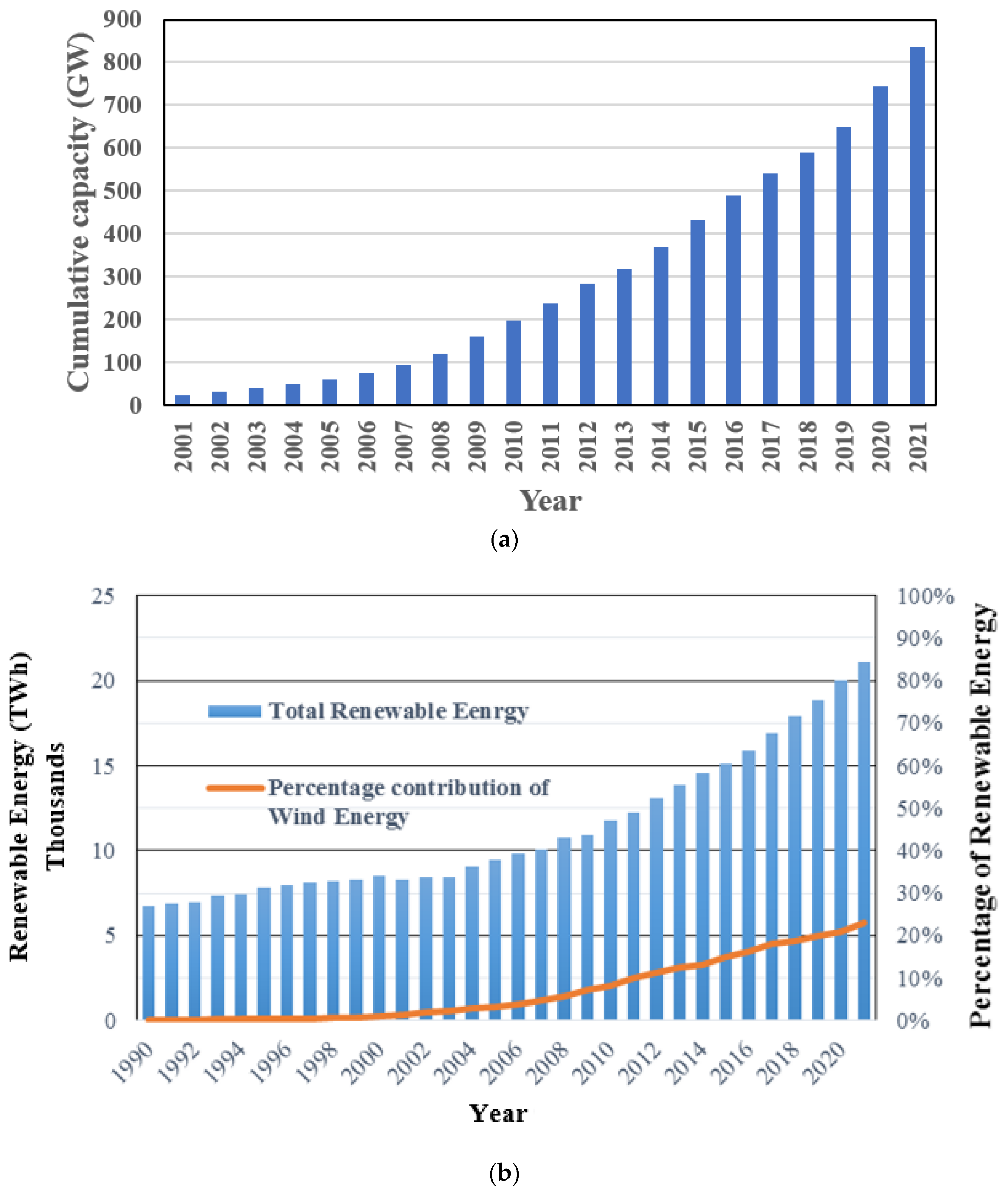
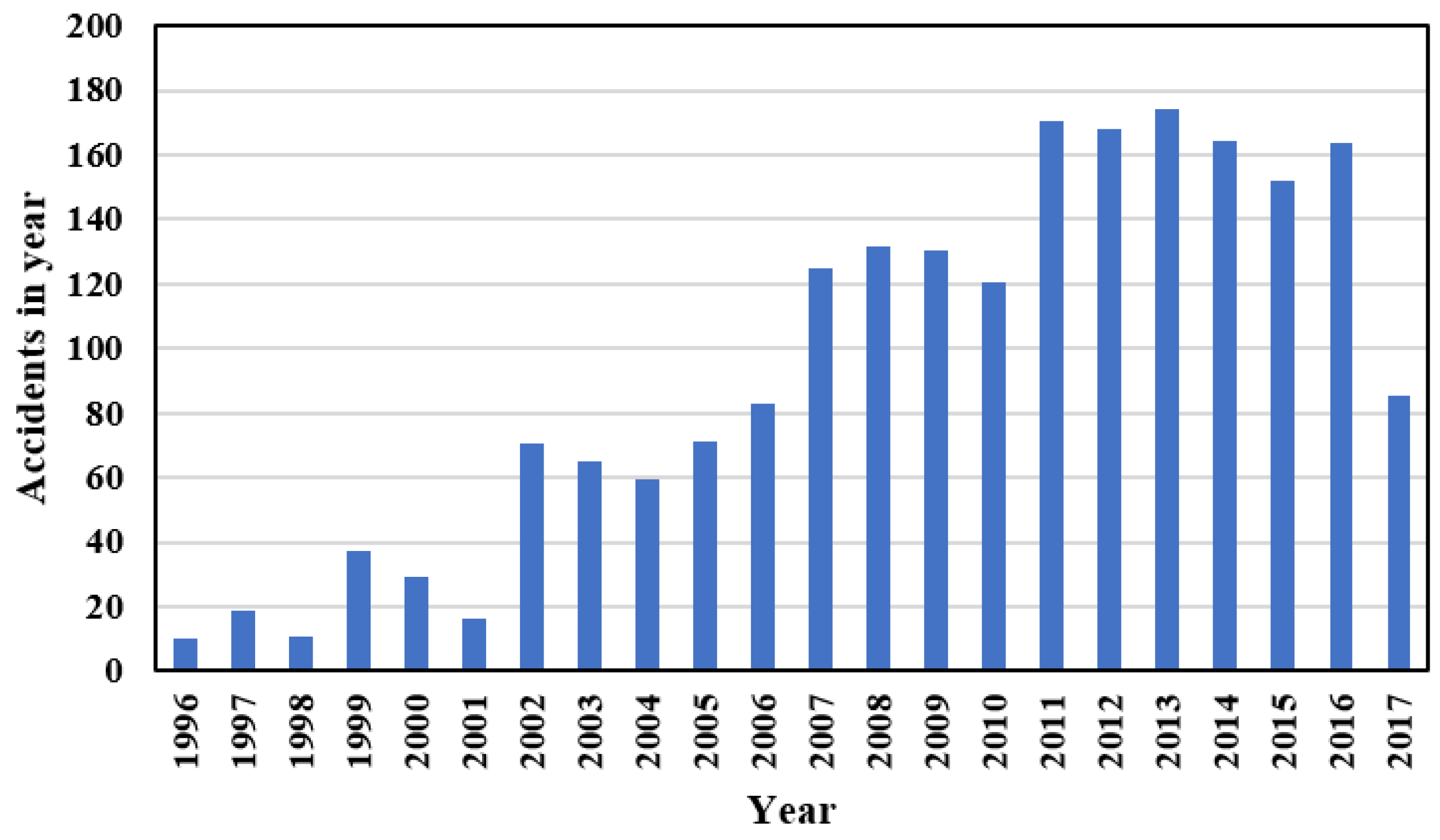
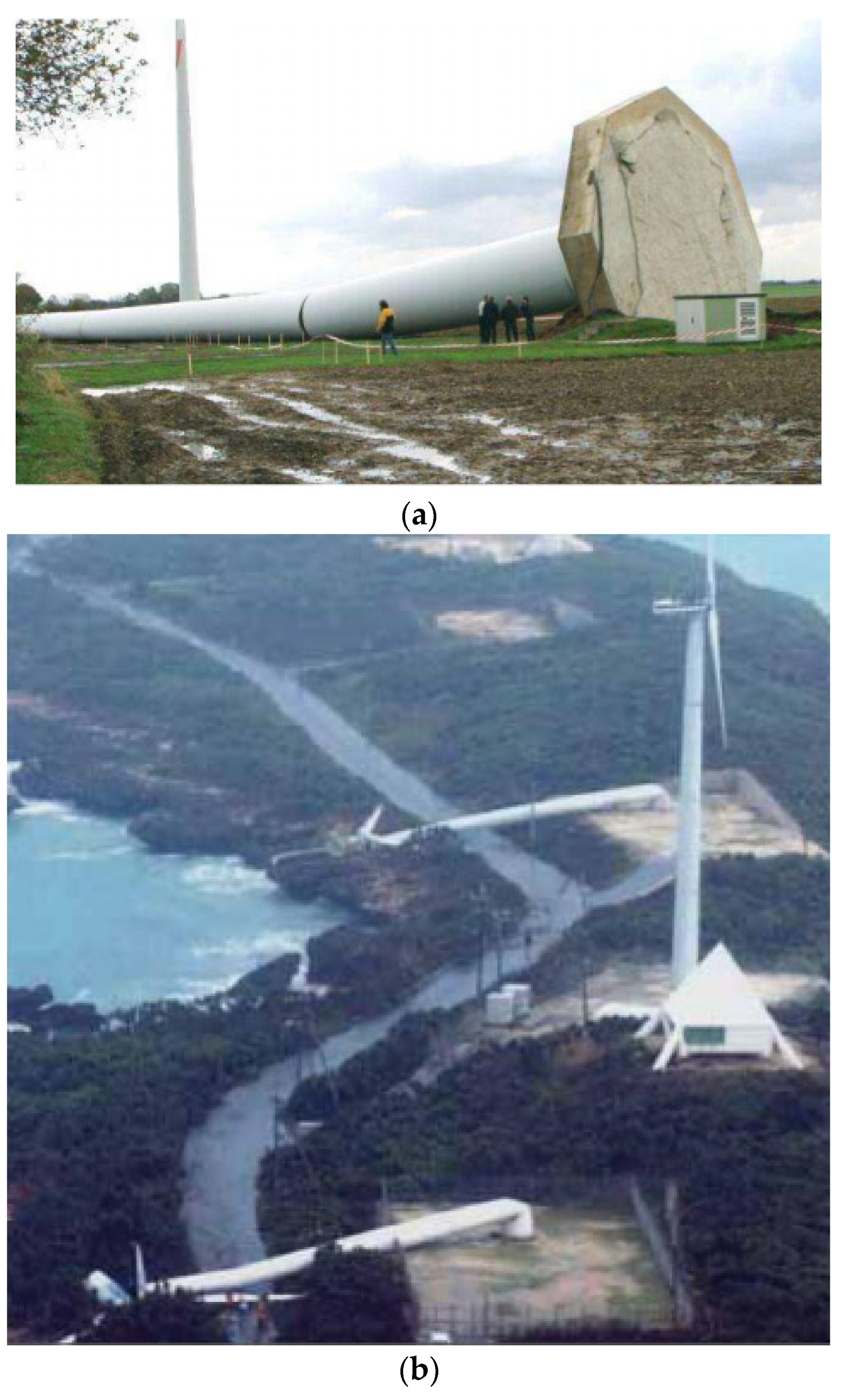


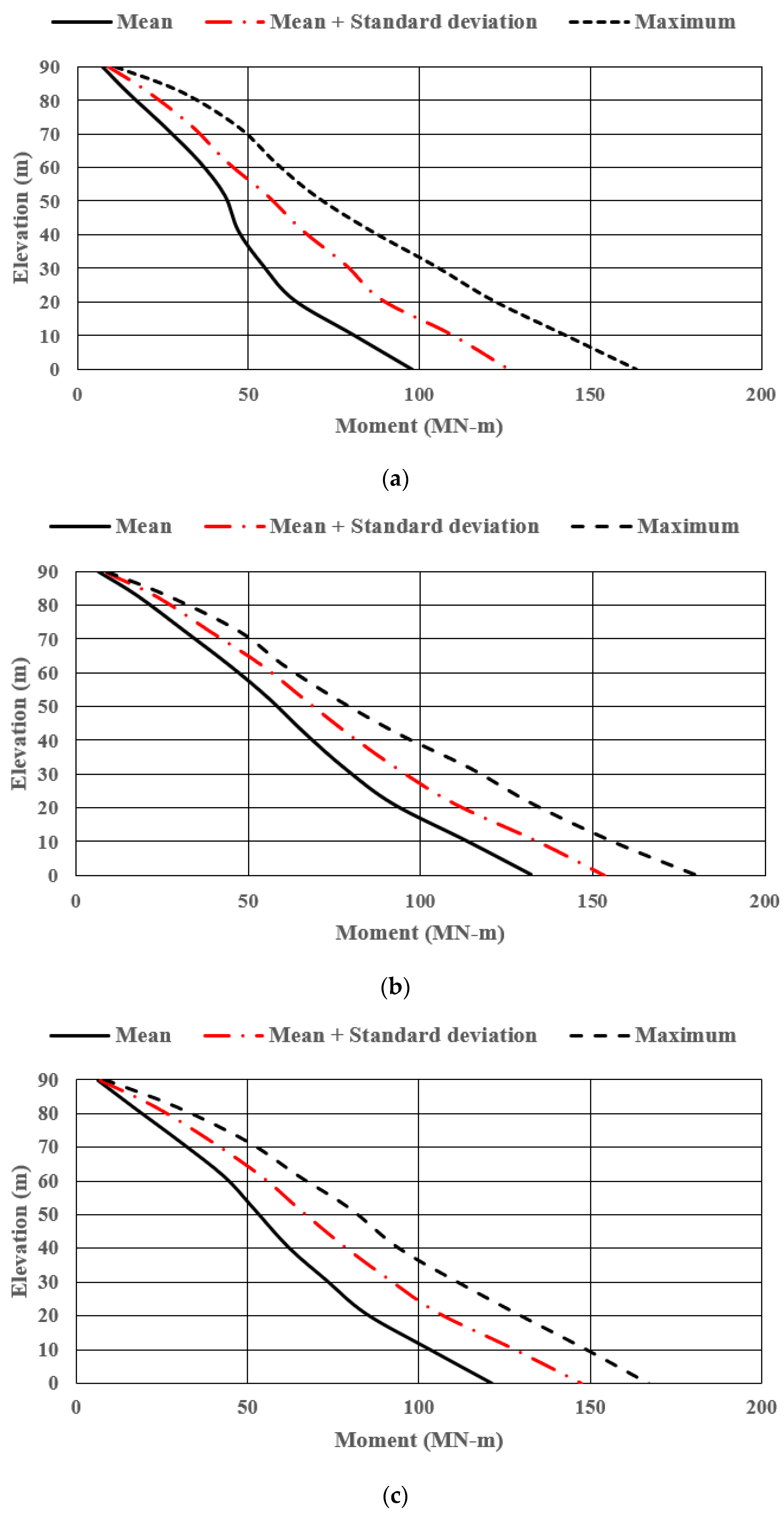

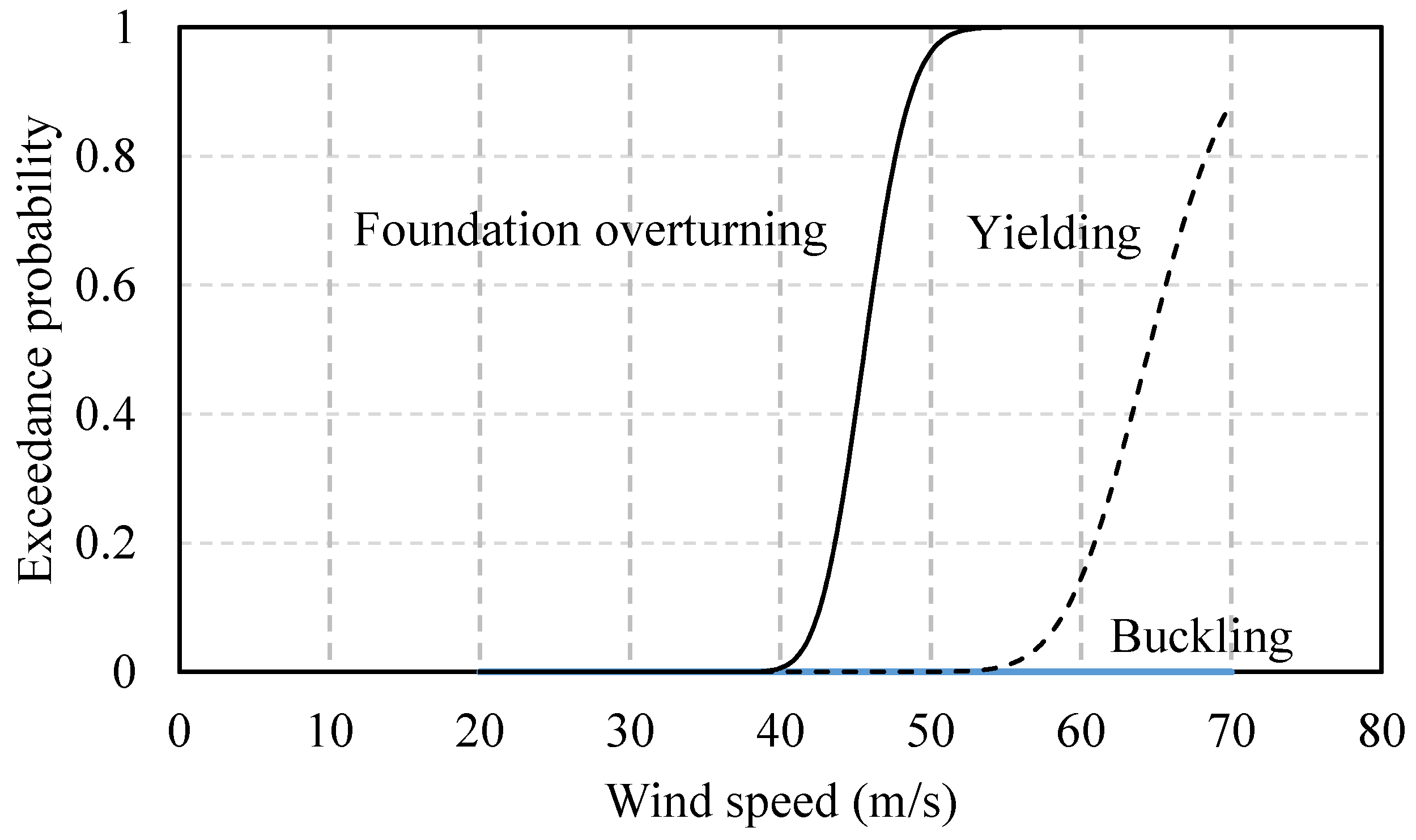
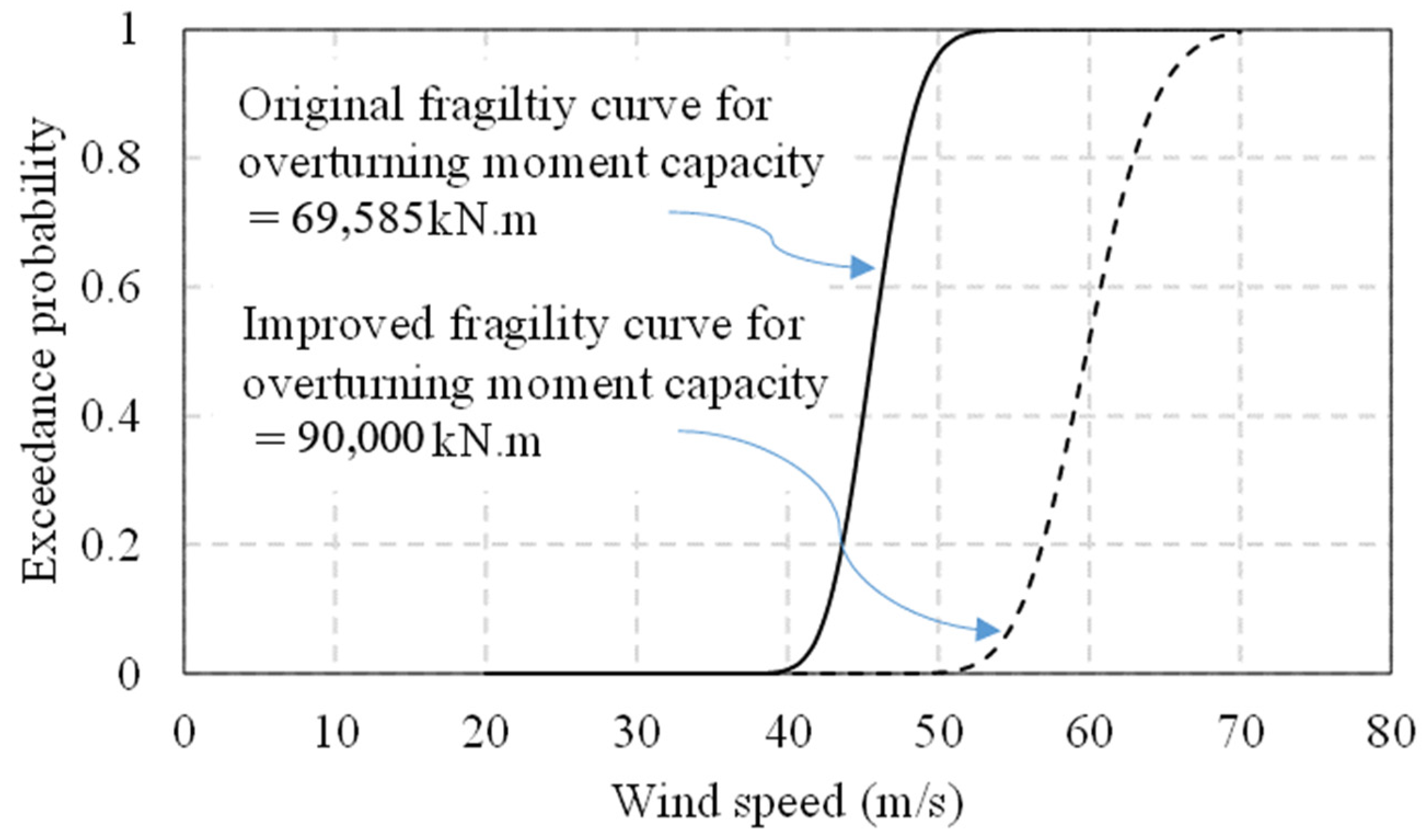
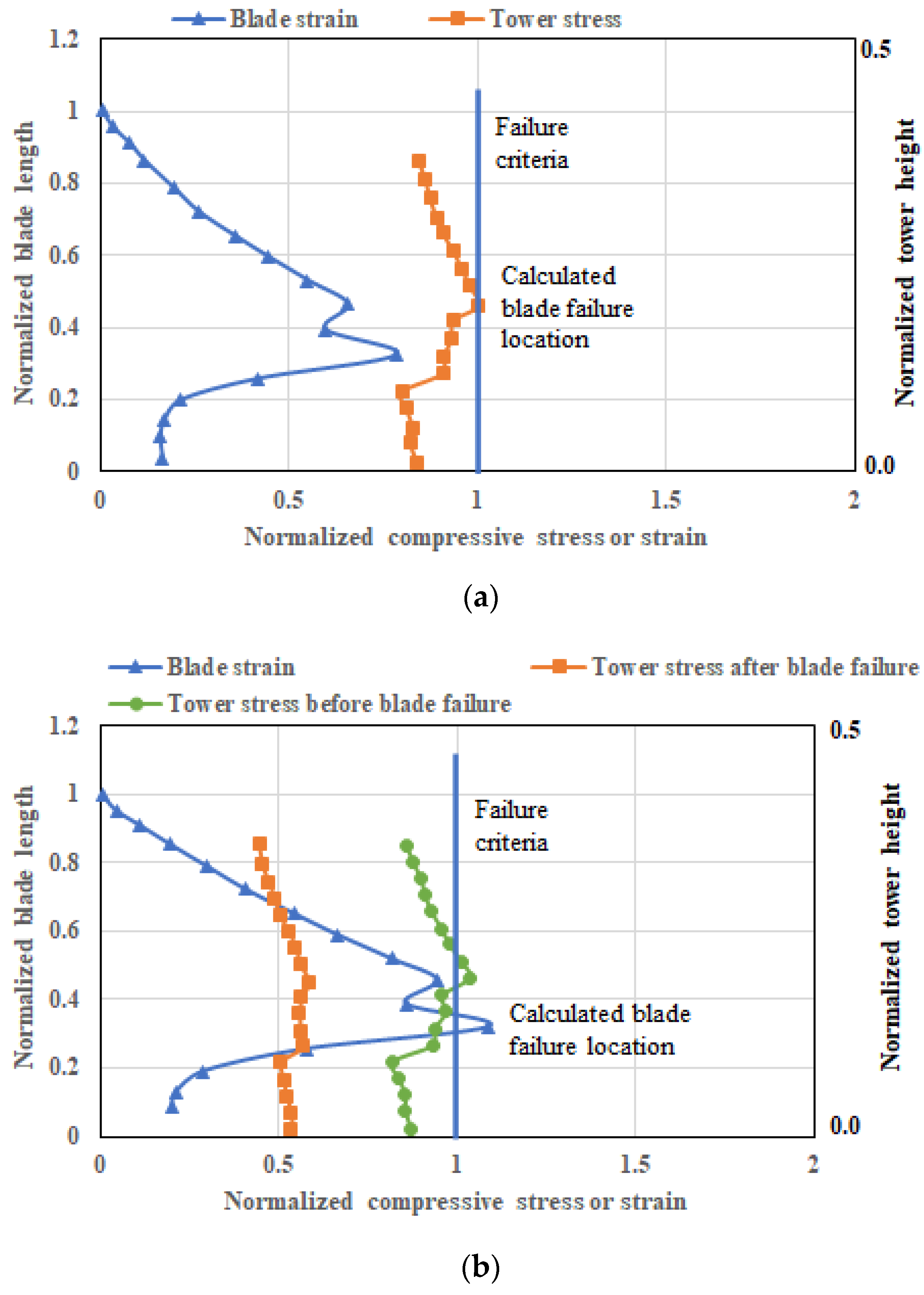
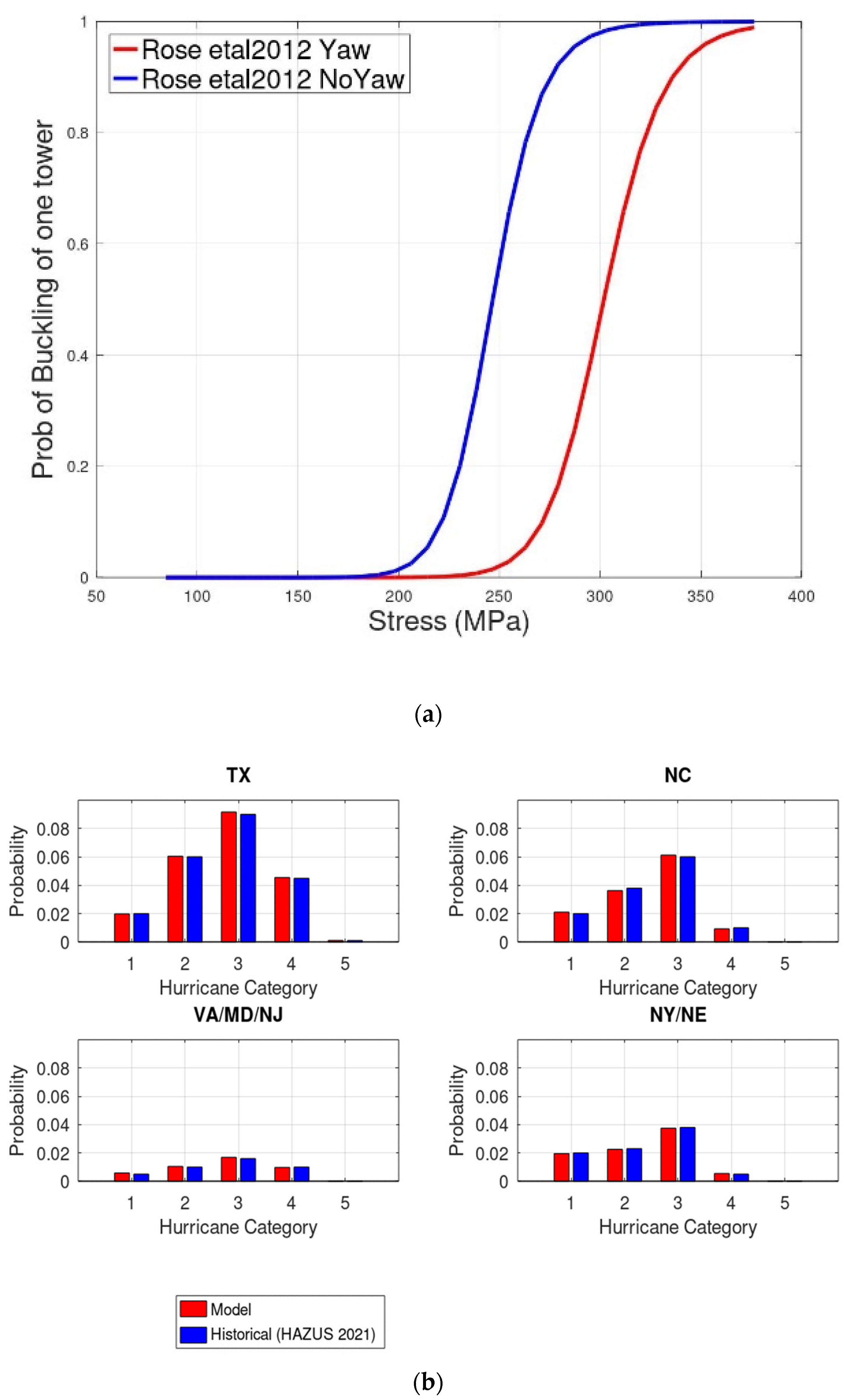
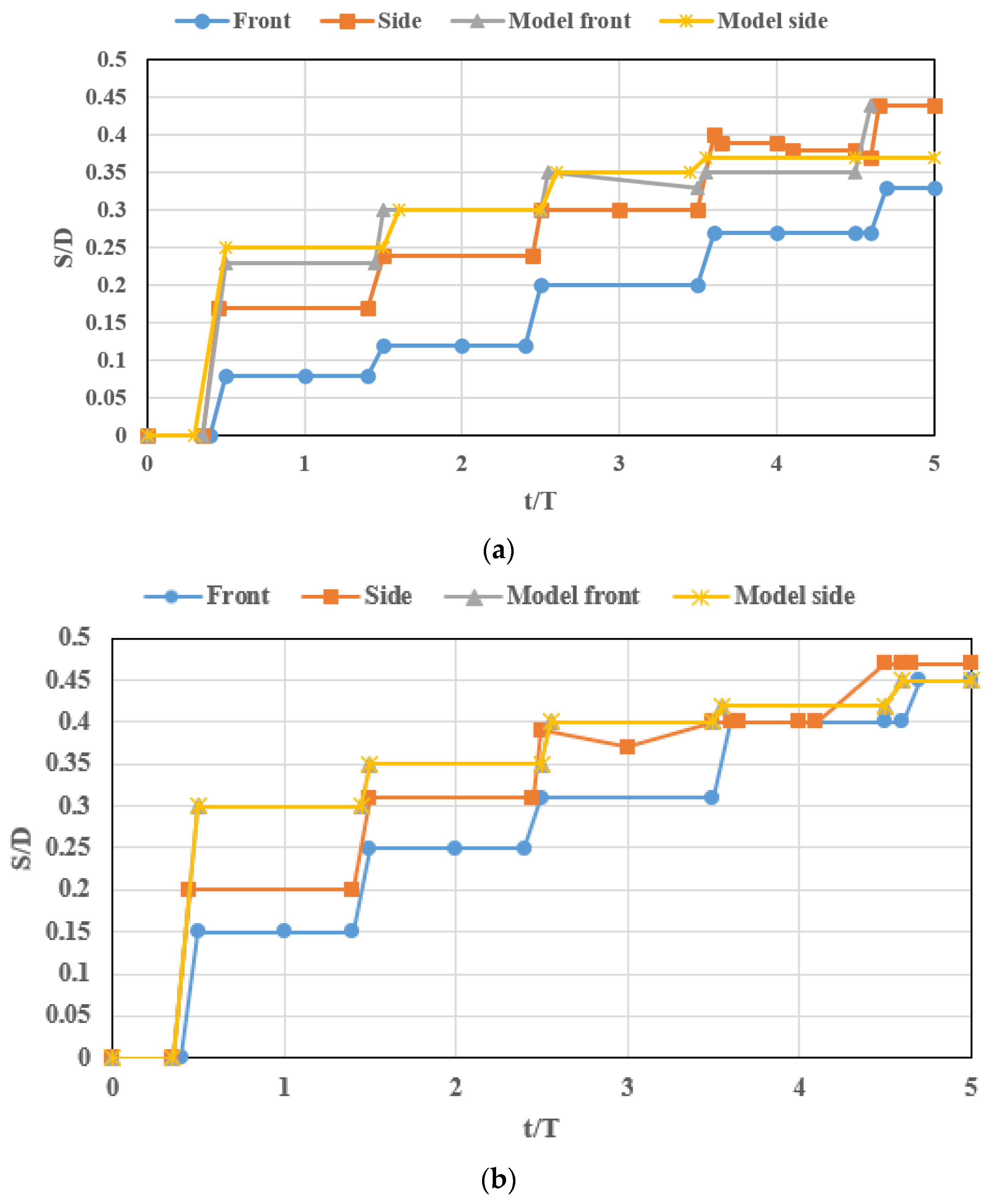
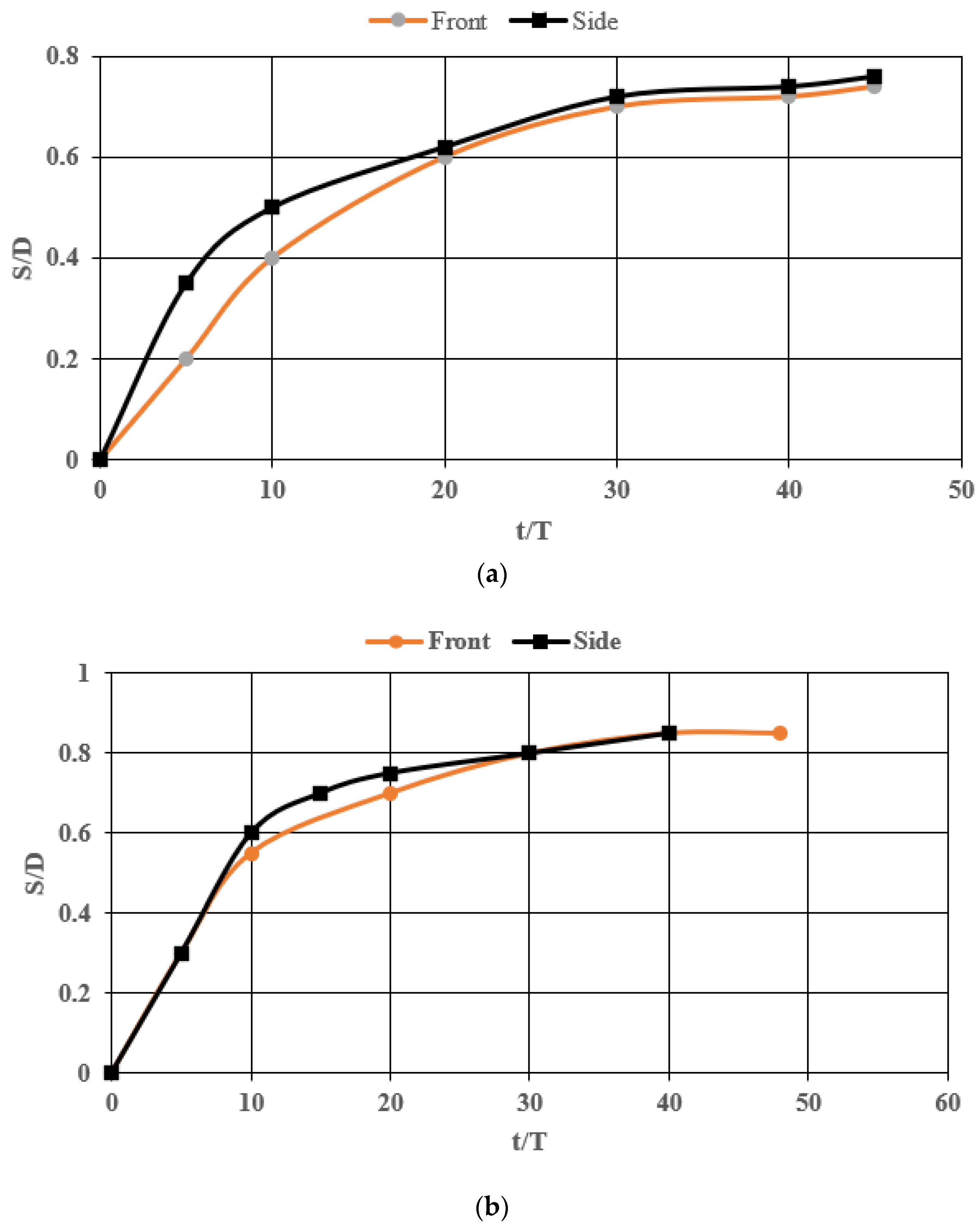
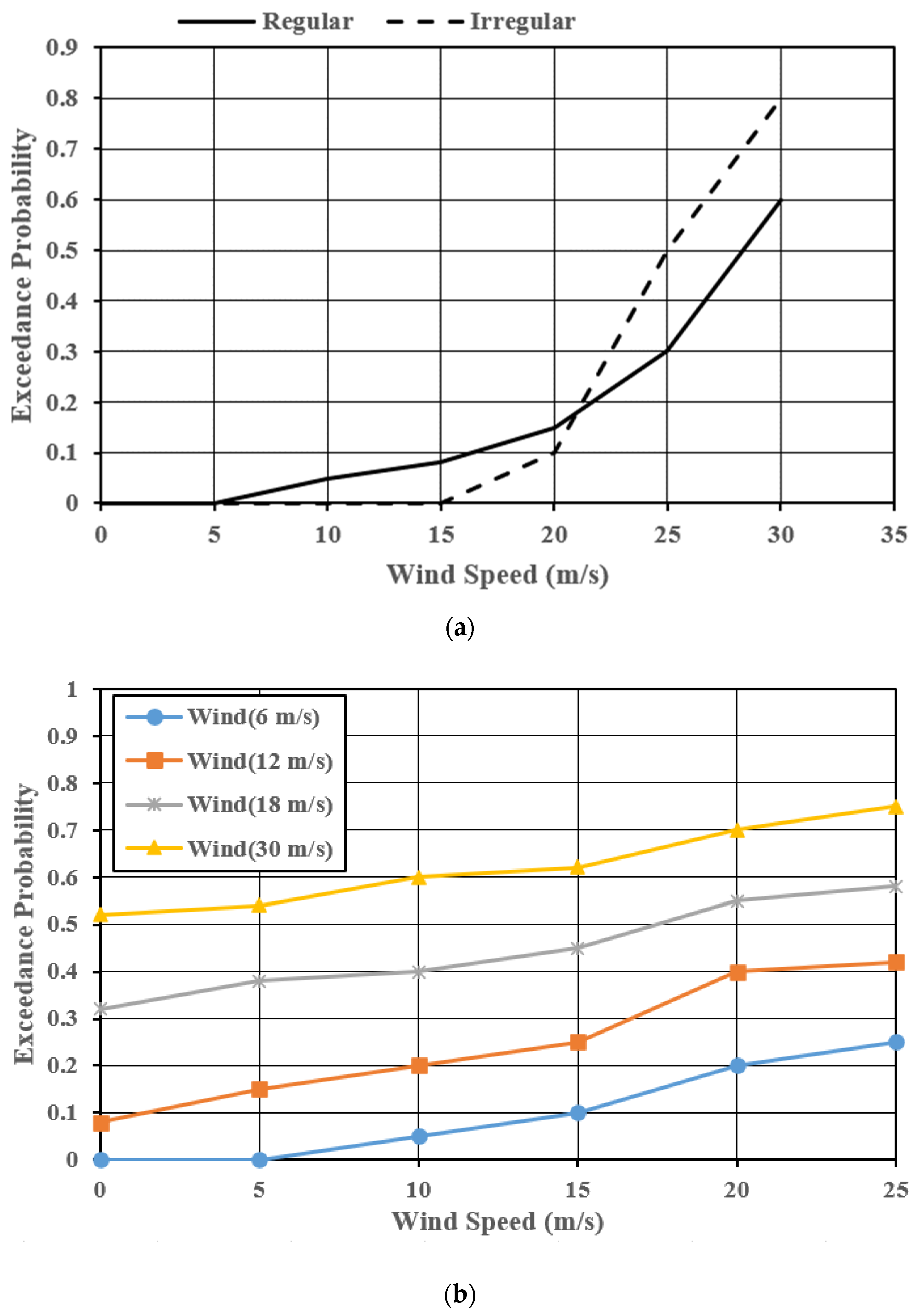
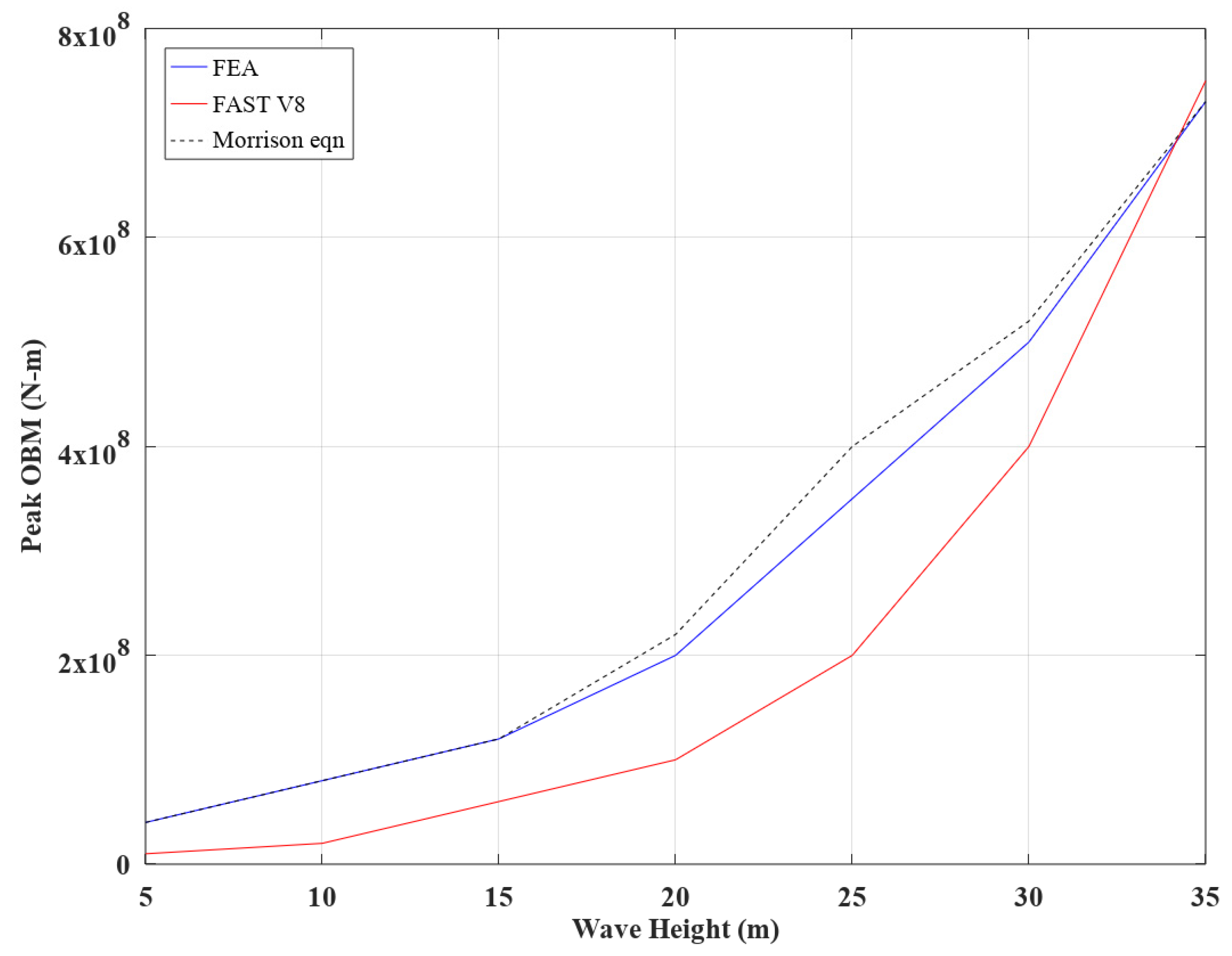
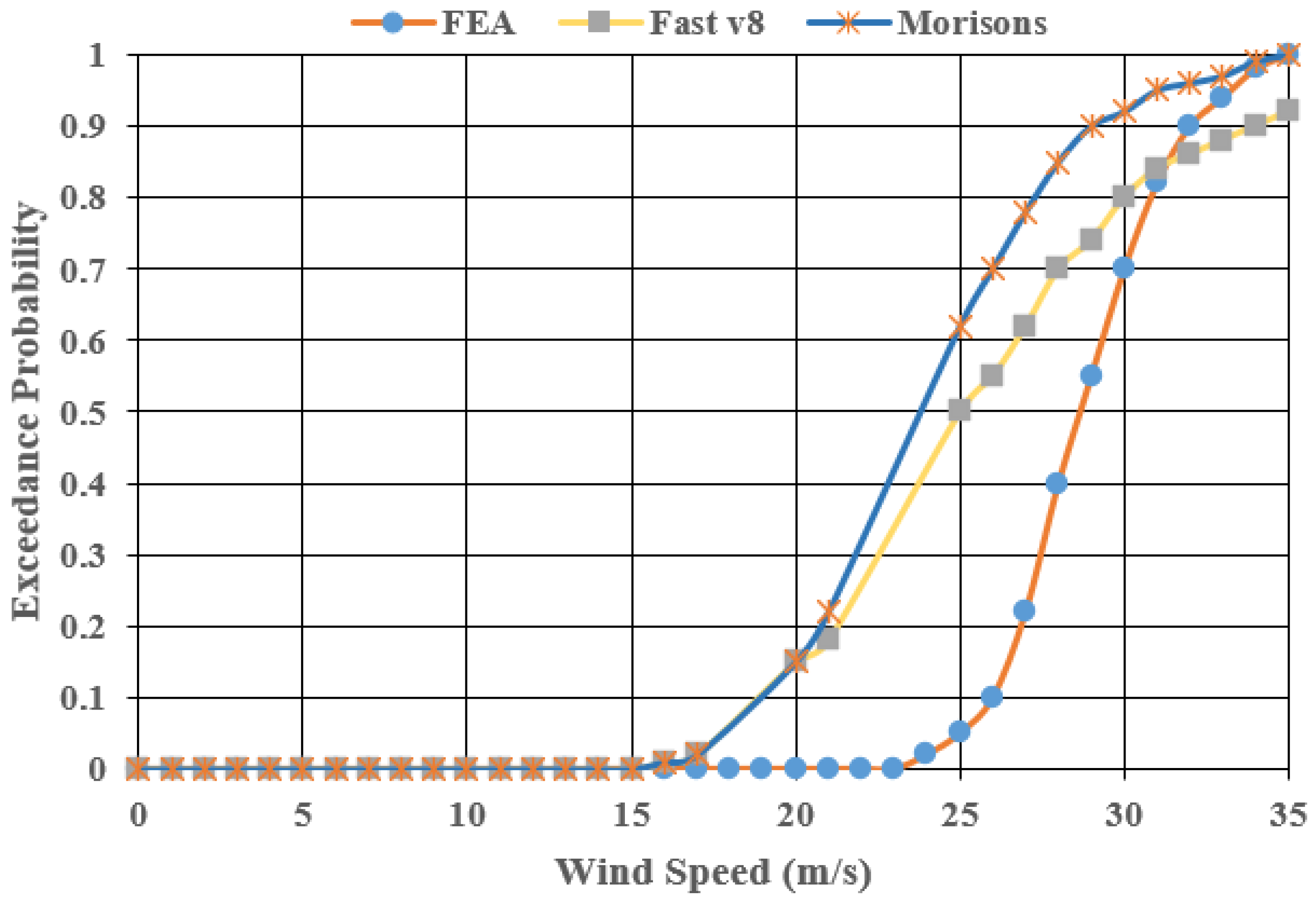
Disclaimer/Publisher’s Note: The statements, opinions and data contained in all publications are solely those of the individual author(s) and contributor(s) and not of MDPI and/or the editor(s). MDPI and/or the editor(s) disclaim responsibility for any injury to people or property resulting from any ideas, methods, instructions or products referred to in the content. |
© 2023 by the authors. Licensee MDPI, Basel, Switzerland. This article is an open access article distributed under the terms and conditions of the Creative Commons Attribution (CC BY) license (https://creativecommons.org/licenses/by/4.0/).
Share and Cite
Patil, A.; Pathak, C.; Alduse, B. Review of Natural Hazard Risks for Wind Farms. Energies 2023, 16, 1207. https://doi.org/10.3390/en16031207
Patil A, Pathak C, Alduse B. Review of Natural Hazard Risks for Wind Farms. Energies. 2023; 16(3):1207. https://doi.org/10.3390/en16031207
Chicago/Turabian StylePatil, Atul, Chaitanya Pathak, and Bejoy Alduse. 2023. "Review of Natural Hazard Risks for Wind Farms" Energies 16, no. 3: 1207. https://doi.org/10.3390/en16031207
APA StylePatil, A., Pathak, C., & Alduse, B. (2023). Review of Natural Hazard Risks for Wind Farms. Energies, 16(3), 1207. https://doi.org/10.3390/en16031207






